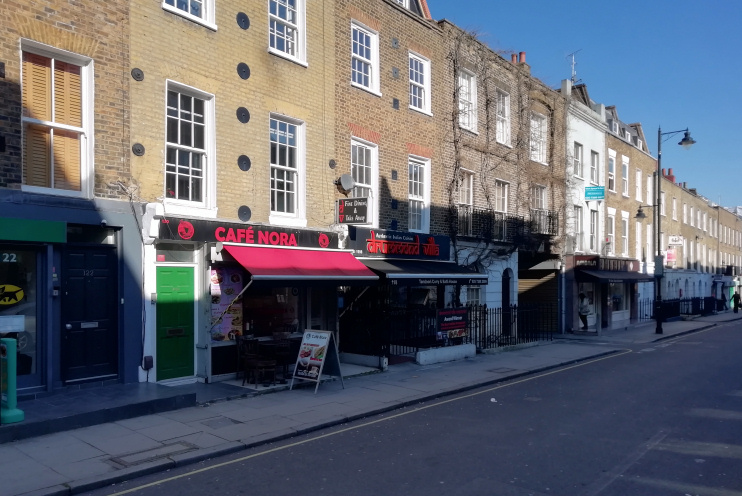West Euston
West Euston, Camden
A ‘renewal priority area’ extending westward from Euston station to Albany Street

This has been a densely built-up neighbourhood for nearly two centuries. A service district was laid out east of Albany Street from the mid-1820s onwards, with three squares that were initially planned as markets for the sale of hay, vegetables and meat. Only Cumberland Market, the hay and straw market in the north, ever served its intended purpose – which was to supersede the original function of the West End’s Haymarket.
Christ Church was built in 1837, primarily for the working class residents of the Cumberland Market area. It is now St George’s [Greek Orthodox] Cathedral. To the east, St James’s Gardens were made in 1887 out of a century-old burial ground that had been established for St James’s Piccadilly.
Much of West Euston’s original housing was destroyed either by bombs or the wrecker’s ball in the mid-20th century. Built in several stages and styles, the Regent’s Park estate afterwards filled most of the western side. To the south-east, the redevelopment of Tolmers Village became a left-wing cause célèbre in the early 1970s.
West Euston takes in Drummond Street (shown in the photograph at the top of the page) and its neighbours, where several late-Georgian terraces survive. This micro-locality is (or was) sometimes called ‘Camden’s Little India’ – primarily because of its restaurants rather than the ethnicity of local residents, who are more likely to be of Bengali origin if they’re from south Asia at all.
Behind the ‘mixed-use campus’ at Regent’s Place, where it’s another world, much of West Euston exhibits a high degree of multiple deprivation, which means that residents suffer disproportionately from the effects of crime, unemployment and ill-health, and low levels of educational attainment and income. The West Euston Partnership was established to help tackle these issues (or their consequences) and receives funding from a variety of public resources and from British Land, the developers of Regent’s Place. Often, these kinds of intitiatives get about five years’ funding and then disappear, but this partnership has been going strong for more than two decades now. Its projects have included a community resource and advice centre on Hampstead Road and the ‘Hpod’ healthy living centre, which opened on Cumberland Market in 2006. A community festival is held in Cumberland Market in mid-September each year.
Around the time of the First World War the Cumberland Market Group evolved among the locality’s artistic community as a successor to the Camden Town Group.
